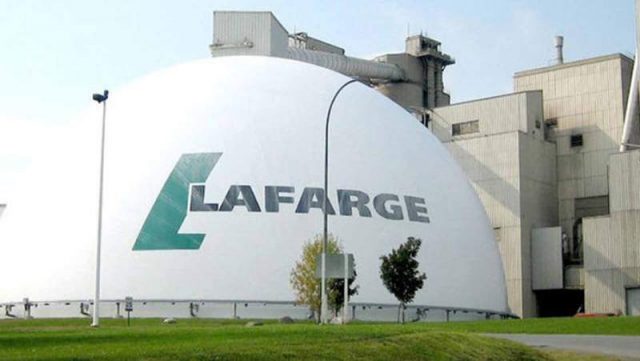Stock Rating: BUY
Price Target: N39.23
Price (31-AUG-2022): N25.00
Potential Upside / Downside: +56.9%
Tickers: WAPCO.NL / WAPCO.LG
FRI, 02 SEPT, 2022-theGBJournal| Having been usurped as the second largest producer in Nigeria, now trailing BUA Cement (SELL; TP: N44.60) in capacity, Lafarge Africa sought to reinvent itself as a player focused solely on the Nigerian market.
Its intention is to deliver strong revenue growth and healthy margins after the acquisition and later divestment of Lafarge South Africa Holdings (LSAH) and its stake in Ghana’s Continental Blue Investment (CBI).
Now the third-largest cement manufacturer in Nigeria, Lafarge Africa has managed to grow revenue by a CAGR of 17.30% between 2019 and 2021. Supported by increased public-private demand for housing and commercial construction, it has enjoyed rising cement prices to compensate for flat volume sales.
Nonetheless, despite no plans to expand capacity, ‘’our view is that opportunities abound for volume and price growth over the forecast years, 2022F- 2027F onwards, following the ongoing debottlenecking exercise in its Ashaka and Ewekoro plants,’’ says Adebayo Adebanjo, Analyst at Coronation Research.
‘’We measure Lafarge Africa’s valuation to be at a significant discount compared with its emerging market peers. Consequently, we recommend Lafarge Africa (WAPCO) as a BUY with a Target Price (TP) of N39.23, a 56.9% upside potential.’’
Having recorded 28.7% revenue growth year-on-year between H1 2021 and H1 2022, our view is that the combination of growing demand for cement, and price increases broadly in line with inflation are set to be the primary drivers of Lafarge Africa’s revenue growth.
The company’s revenue is made up of Revenue from Cement as well as Revenue from Aggregates, Concrete, Admixtures and other products. Cement revenue makes up approximately 97% of total revenues. The revenue CAGR between 2019 and 2021 was 5.9%, and we forecast a CAGR of 10.0% over 2022F – 2027F.
According to the National Bureau of Statistics (NBS), the entire cement sub-sector (classified by the NBS as part of manufacturing) continues to outperform the economy, suggesting that demand remains generally strong and Lafarge Africa’s volume sales have trended above the GDP growth rate.
The cement sub-sector grew at a CAGR of 4.5% in inflation-adjusted terms between 2018 and 2021. Like BUA Cement, a price taker in an oligopolistic industry, Lafarge Africa implemented price increases over the period, with its unit price rising by a CAGR of 9.8% in nominal terms between 2016 and 2021.
While inflation averaged 14.1% year-on-year over the period, the company was unable to match this with price increases, as was the case with the price-setter in the Nigerian market, Dangote Cement, which only managed to put through prices increases close to the rate of inflation in 2021.
Debottlenecking exercise to boost output.
In line with the company’s strategy to focus its operation in Nigeria, management has embarked on debottlenecking exercises in its Ashaka and Ewekoro plants rather than invest in additional capacity.
This strategy has become necessary to stay competitive with its industry peers, who are aggressively expanding capacity to capture demand opportunities. According to management, the exercise could free up to an additional 1.0 million metric tonnes (mmt) in installed capacity and improve economies of scale, revenue per tonne and margin performance.
Coronation Research analysts’ growth forecast for both revenue from cement and revenue from Aggregates, Concrete, Admixtures and others for FY22-27F is set at a CAGR of 10.0% in nominal terms.
Coronation also forecast EBITDA to grow by a CAGR of 9.6% over the forecast period from FY 2022F to FY 2027F, translating into an EPS CAGR of 14.3%, and expect the growth to be driven primarily by a steady rise in output from increased capacity utilisation and rising prices.
Lafarge Africa has achieved a considerable reduction in its direct costs as a percentage of sales, falling from 83% in 2017 to 51% in 2021.
This reduction was aided by the disposal of Lafarge Africa’s loss-making South African business in 2019. In addition, management intensified efforts to improve competitiveness by increasing efficiency and cutting waste. These activities were particularly seen in the decrease in administrative costs, distribution fixed costs, maintenance costs and raw materials costs per tonne. We notice that Sales and Distribution costs became an expanded line item from 2019 onwards to include distribution costs.
Nonetheless, the rising cost of inputs, raw materials and energy costs have been a major concern for all players in the industry in recent times and the need to find alternatives has become imperative. Like its peers, the company cites significant rises in the price of Automotive Gas Oil (AGO, also known as diesel) and the devaluation of the Naira as factors driving up its energy costs. In the company’s efforts to rein in costs, it has also started consuming locally sourced Liquefied Natural Gas (LNG).
This has also helped to diversify its energy mix and reduce its reliance on imported coal and AGO. Since 2020, having recovered from the woes of its now divested South African business, production costs as a percentage of sales have remained within the region of 50% – 53%. We think that this percentage will hover around this level, growing slightly to reflect energy cost pressures and then trend downwards into our forecast period, with a forecast of 51% for 2027F.
Housing and infrastructure deficit support growth.
We reiterate that growth opportunities abound in the domestic cement market, in which Lafarge Africa remains a major player. Official records place the country’s housing deficit at 28 million units.
According to the latest national accounts, the real estate sector grew by 5.3% y/y in Q1 2022 and has averaged a growth rate of 5.6% over the past eight quarters in inflation-adjusted terms. Nigeria’s mortgage/GDP ratio of 0.6% compares with South Africa’s 23.0%, Tunisia’s 10.6%, Kenya’s 2.1%, and Ghana’s 0.8%.
In the 2022 budget, the FGN allocated N12.0bn to the national housing program, compared with N11.9bn allocated last year. In addition, N10.0bn was allocated to social housing schemes (family homes fund), including N2.1bn for new social housing in Iponri Lagos State and N1.0bn for new prototype housing schemes in Niger and Lagos states.
These statistics reinforce the growth potential for the industry, in our view.
Valuation and Rating.
We initiate coverage with a Target Price (TP) of N39.23/s and a BUY rating, implying a potential upside of 56.9% from the current price. According to our estimates, Lafarge Africa is trading on a 2022F P/E of 8.5x and an EV/EBITDA multiple of 3.4x, significant discounts to its emerging market peer multiples of 15.7x and 8.6x, respectively.
In our view, the current valuation is likely a result of a preference for the company’s industry peers’ growth potential following the company’s lack of capacity investment over the past five years. In addition, we believe the stock has been derated by investors owing to a lack of confidence following the challenging acquisition and eventual divestment of Lafarge South Africa Holdings (LSAH) in 2019 and strong dilution in investor holdings stemming from the N230bn worth of rights issues between 2017 and 2018.
We emphasise that the company has deleveraged its balance sheet, ridding it of significant FX debt, and has divested itself of its 35% holding in Ghana’s Continental Blue Investment (CBI). As a result, we believe that it is able to focus its output exclusively on Nigeria and take advantage of strong demand opportunities to expand revenue to generate healthy margins.
Twitter-@theGBJournal| Facebook-The Government and Business Journal|email: gbj@govbusinessjournal.ng|govandbusinessj@gmail.com








